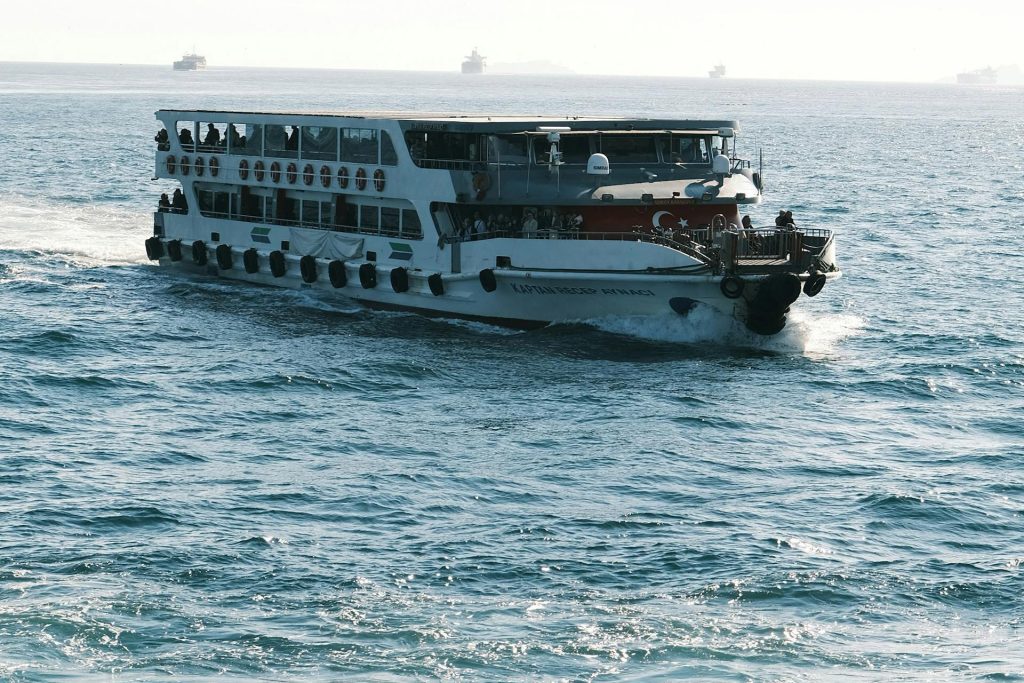Whale watching is one of the most exciting adventures you can embark on. There’s nothing quite like seeing these gentle giants of the ocean up close in their natural habitat. Over the years, I’ve learned a lot about what makes a whale-watching trip memorable, and I’m thrilled to share my best tips with you. Whether it’s your first time or you’re a seasoned whale enthusiast, it can make all the difference when you properly prepare for whale watching.
Let’s dive into everything you need to know to make your whale-watching experience in Montauk, NY, truly unforgettable.
Key Takeaways
- Consider factors like group size, guide expertise, eco-friendliness, and specific interests when selecting a tour operator.
- June to September is generally peak season, but research specific species’ activity for optimal viewing. Morning tours are often recommended.
- Book tours in advance, especially during peak season. Check the weather forecast, pack essentials like binoculars and sunscreen, and arrive early.
- Some operators offer ADA-compliant boats and accommodations for guests with mobility challenges.
Planning Your Whale Watching Trip
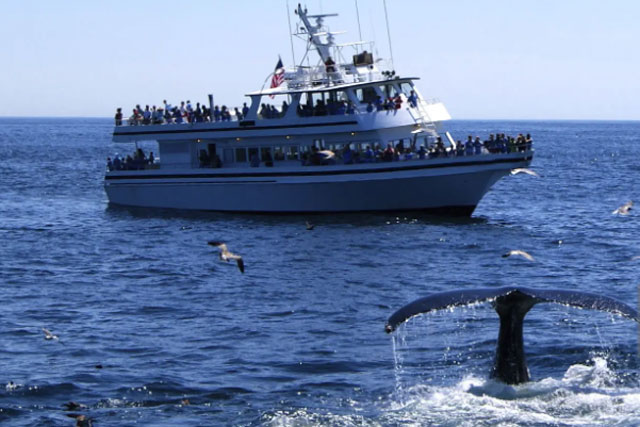
Choosing the Right Tour
The first step to preparing for a whale-watching trip is selecting the right tour. Montauk offers a variety of options, ranging from large-group excursions on spacious vessels to more intimate eco-friendly tours on smaller boats. Each option provides a unique experience, so consider what aligns best with your preferences.
If you’re interested in a more educational outing, look for companies that provide marine biologists or naturalists as guides. These experts can offer fascinating insights about the whales, their behaviors, and the ecosystem that sustains them. Eco-conscious travelers might prefer tours that emphasize sustainable practices, such as minimizing boat noise and avoiding disturbances to marine life.
Pro Tip!
To maximize your chances of spotting whales, choose tours that venture into known feeding grounds or migration paths, as these are hotspots for whale activity.
Timing Your Trip
Timing is everything in whale watching. While whales are visible in Montauk from May to October, the peak months for sightings vary by species. Research which species are most active during your travel dates to align your trip with the best opportunities.
Morning tours are often recommended due to calmer waters and better visibility, but sunset excursions can offer beautiful views and unique photo opportunities. Some tours even track recent whale activity and adjust their routes to increase the likelihood of sightings, so ask about recent trends when booking.
Booking in Advance
Whale-watching tours in Montauk are highly popular, especially during the peak season. To ensure you get a spot, booking your tickets well in advance is crucial. Many tour operators allow online reservations, providing an easy and convenient way to secure your place. Some companies also offer discounts for early bookings or group reservations, so it’s worth checking their websites for deals.
When booking, pay attention to the cancellation policy. Weather conditions can change quickly, and rough seas may lead to cancellations or rescheduling. A flexible policy ensures that you won’t lose out if Mother Nature decides to intervene.
Researching Reviews
Reading reviews from past visitors can be incredibly helpful when choosing a tour operator. Look for feedback about the guides, the comfort of the boat, and the overall experience. Reviews can also provide valuable insights into whether the operator prioritizes the safety and enjoyment of both guests and marine life.
Fun Fact!
Did you know that some Montauk whale-watching tours are part of citizen science programs? Guests can contribute to ongoing marine research by reporting whale sightings, helping scientists track migration patterns and population health.
For ADA Whale Watchers and Guests with Mobility Challenges
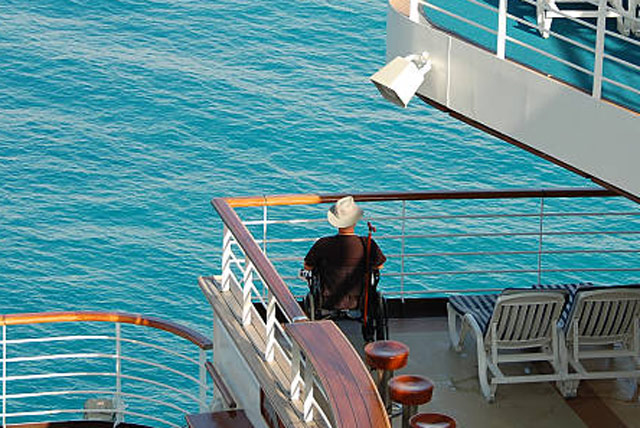
Some whale-watching operators in Montauk are committed to inclusivity and provide accommodations for guests with mobility challenges. Here’s what to consider when planning your trip:
- ADA-Compliant Boats: Look for tours with ADA-compliant vessels that feature ramps, wider aisles, and accessible restrooms. These features ensure a comfortable experience for wheelchair users and those with limited mobility.
- Seating Arrangements: Some operators offer designated seating areas for guests requiring additional space or stability. Be sure to mention your needs when booking.
- Boarding Assistance: Many crews are trained to assist guests with boarding safely. If you need extra support, don’t hesitate to inform the operator ahead of time so they can be prepared.
- Land-Based Options: If a boat tour isn’t feasible, consider land-based whale-watching spots in Montauk. Places like Montauk Point Lighthouse and nearby beaches offer excellent vantage points for spotting whales, often with accessible pathways and viewing areas.
Pro Tip!
Call the tour operator in advance to discuss specific accessibility features and any accommodations you may need. This ensures a smooth experience from start to finish.
Communicating Your Preferences
Once you’ve chosen a tour, don’t hesitate to reach out to the operator with any specific questions or preferences. Whether you’re a photography enthusiast hoping for the best angles, a family looking for a kid-friendly outing, or a nature lover interested in eco-conscious practices, most tour operators are happy to accommodate your needs.
Pro Tip!
Ask the tour operator about the best seating options on the boat. Some areas may offer a better view of the water or provide more stability for those prone to seasickness.
Packing Essentials When You Prepare for Whale Watching
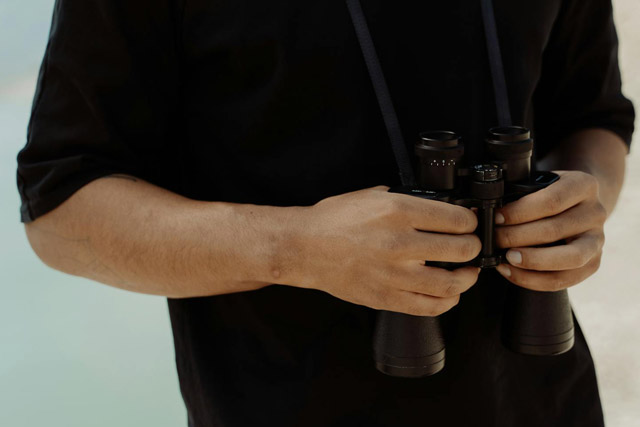
Packing the right items is key to a comfortable and enjoyable whale-watching experience. Here’s a quick checklist I made to get you started:
- Binoculars: While many whales come close to the boat, binoculars help you spot them from a distance.
- Camera or Smartphone: Capture unforgettable moments, but remember to keep your device secure.
- Sunscreen and Sunglasses: The sun reflecting off the water can be intense, even on cloudy days.
- Hat and Layers: It can get breezy on the open water, so dressing in layers is a smart choice.
- Motion Sickness Remedies: If you’re prone to seasickness, pack anti-nausea medication or natural remedies like ginger chews.
- Snacks and Water: Most tours provide refreshments, but having your own ensures you won’t go hungry.
Getting Ready for the Day
Checking the Weather
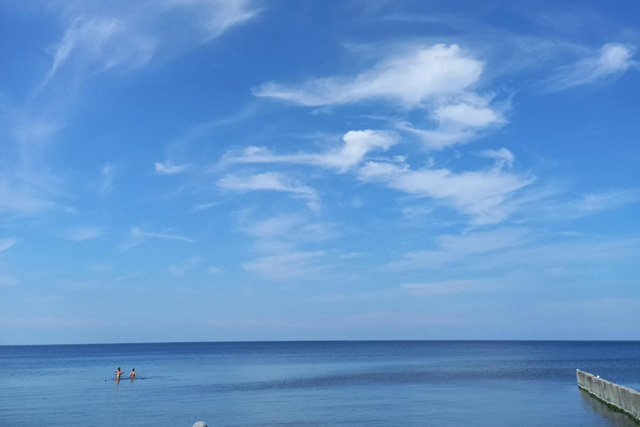
Weather plays a big role in whale watching. Calm seas and sunny skies offer the best conditions for spotting whales. Be sure to check the forecast the day before your trip so you can dress accordingly.
Eco-Friendly Preparations
Bring digital tickets to reduce paper waste, pack reusable containers, and avoid single-use plastics on board.
Arriving Early
Arriving at the dock 30 minutes before departure ensures a stress-free start to your adventure. It also gives you time to meet the crew and settle in before setting sail.
Local Amenities
Before or after your tour, visit the Montauk Point Lighthouse Museum or enjoy seafood at local harbor restaurants.
Onboard Tips for Whale Watching Success
Listening to the Experts
Your guides and crew members are experts in spotting and identifying marine life. Listen to their instructions and tips—they often know where whales are most active.
Fun Fact!
Whales communicate using a variety of sounds, including clicks, whistles, and songs. Some whale songs can last for hours and travel hundreds of miles underwater!
Staying Alert
Whales can appear at any moment, so stay attentive and keep your eyes on the horizon. Look for signs like spouts of water, splashes, or birds circling above the water.
Being Patient
Remember, whales are wild animals, and sightings can’t be guaranteed. Enjoy the journey and take in the beauty of the ocean while you wait for a whale to make its grand appearance.
Safety First
As both a parent and a person with mobility issues, safety is usually at the top of my considerations. Always wear your life jacket, stay seated during rough waters, and keep an eye on children at all times.
Capturing the Perfect Moment
Taking photos of whales can be challenging but rewarding. Here are some tips to help you capture stunning shots:
- Use a Zoom Lens: A zoom lens allows you to capture close-up details without disturbing the whales.
- Keep Your Camera Ready: Whales can appear suddenly, so always be prepared.
- Focus on the Action: Breaches and tail slaps make for dramatic and memorable photos.
- Enjoy the Moment: Don’t get so caught up in taking pictures that you forget to simply watch and enjoy the experience.
Common Whale Species in Montauk
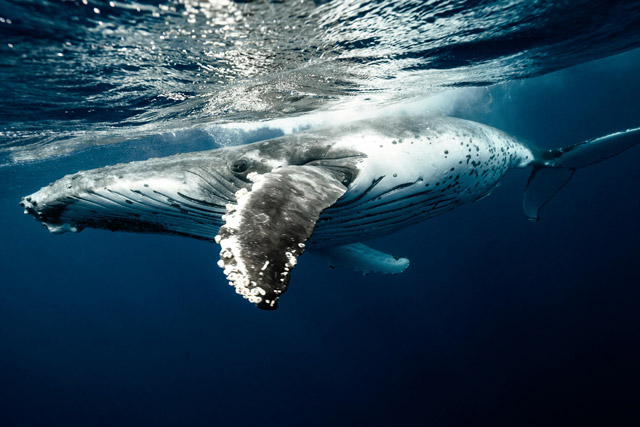
When preparing for a whale-watching trip, it’s exciting to know what species you might encounter. Montauk’s waters are teeming with marine life, offering a rich diversity of sightings that will make your trip unforgettable.
Humpback Whales
Known for their acrobatic breaches and long, complex songs, humpback whales are a favorite among whale watchers. These majestic creatures can grow up to 60 feet long and weigh as much as 40 tons. Humpbacks are incredibly social and often travel in pods, giving viewers the chance to see cooperative behaviors like bubble-net feeding, where groups of whales work together to corral fish.
Humpbacks are famous for their haunting, melodic songs that can travel vast distances underwater. These songs are believed to play a role in communication and mating, adding an auditory treat to the visual spectacle of seeing one breach or slap its tail on the surface.
Finback Whales
The finback whale, or fin whale, is the second-largest whale in the world, reaching lengths of up to 80 feet. Nicknamed the “greyhounds of the sea,” fin whales are known for their speed and streamlined bodies. In fact, they’re the fastest of the great whales! Their asymmetrical coloration—white on the right side of their jaw and darker on the left—is one of their most striking features.
Fin whales are often seen lunge-feeding, a dramatic behavior where they accelerate and gulp massive amounts of water and prey in one swift movement. These whales are particularly drawn to the schools of small fish and krill abundant in Montauk’s nutrient-rich waters during the summer.
Pro Tip!
Keep your camera ready—fin whales often surface several times before diving, giving you multiple chances for that perfect photo!
Minke Whales
Minke whales are a delightful sight. These whales typically reach lengths of 20-30 feet and are known for their sleek, streamlined bodies. Minkes are also fast and agile.
While they are less likely to breach than humpbacks, minkes are curious and may approach boats, offering a closer look for lucky whale watchers. They’re also known for their feeding technique called “gulp feeding,” where they quickly engulf schools of fish in their pleated throats.
Fun Fact!
Minke whales are can be identified by their distinct white band on each flipper, often called the “minke mitten.
Dolphins and More
While whales are the main attraction, Montauk’s waters offer much more than just these gentle giants. Pods of dolphins are commonly seen during whale-watching tours, often racing alongside boats and leaping playfully out of the water. Bottlenose and common dolphins are the most frequently spotted species, and their social, energetic behavior is always a crowd-pleaser.
Sea Turtles: In addition to dolphins, keep an eye out for endangered species like the loggerhead and leatherback turtles that occasionally surface in Montauk’s waters. These ancient mariners glide gracefully through the waves, a serene contrast to the energetic dolphins.
Seabirds: The sky is alive with activity too! Seabirds like gulls, terns, and gannets often hover near feeding whales, hoping to snag a meal from the surface.
Final Thoughts
Preparing for a whale-watching trip doesn’t have to be complicated. With the right planning, packing, and mindset, you can ensure an unforgettable adventure in Montauk. From spotting humpback whales to learning about marine conservation, every moment on the water is a chance to connect with nature and create lasting memories.
So, grab your binoculars, pack your sunscreen, and get ready for an incredible journey. I can’t wait for you to experience the thrill of whale watching in Montauk. Happy spotting!

